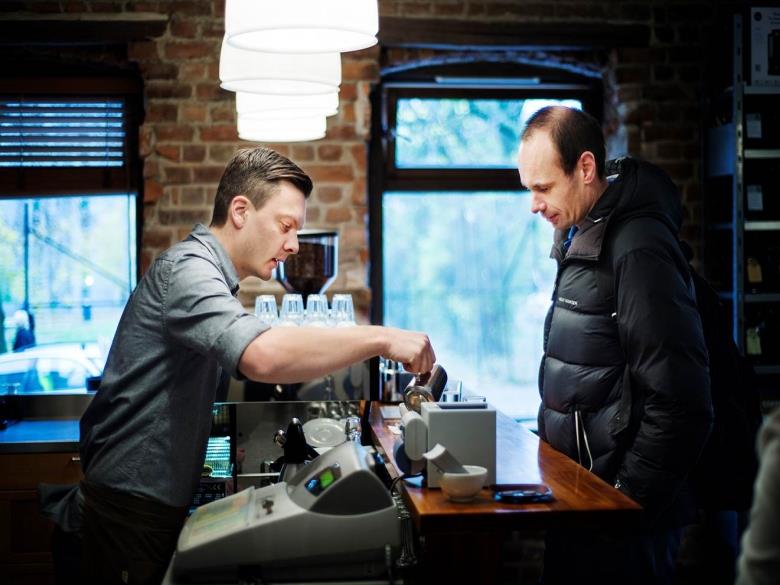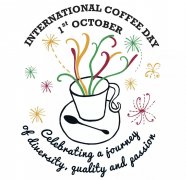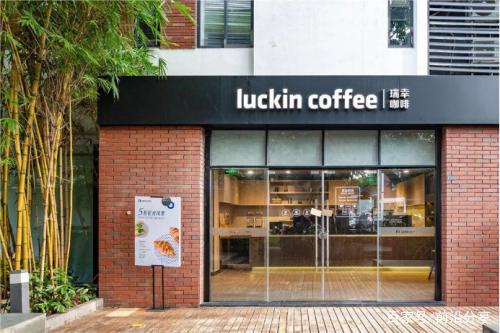With what advantages does Oslo, the capital of Norway, lead the third wave of coffee?

Professional coffee knowledge exchange more coffee bean information please follow the coffee workshop (Wechat official account cafe_style)
The emergence of the word "third wave of coffee" essentially includes boutique, direct trade, sustainability, shallow baking and innovative brewing. Appreciation is the core, and manufacturing and marketing are the background. through the staff's stories and education (soil, environment, manufacturing process), lovers who are picky about taste buds can understand how special their taste buds are, while bakers and cafes are independent small businesses that attach importance to the community.
You may have heard that Norway ranks second in the world in terms of personal coffee consumption (an average of 9.9 kilograms per year), but Oslo, the capital of Nordic coffee pilgrimage, does not win by quantity.
Lonely Planet Lonely Planet ranks the world's best light roasted fruit-flavored coffee here; CNN points out that Norway is changing the way people drink coffee. In addition, the Melbourne coffee culture, which attracts London, New York, Los Angeles, Tokyo and Copenhagen with its unique style, is guiding independent cafes to develop its own house blend by setting up Bureaux Collective, Australia's first shared roasting workshop, whose founder Tim Varney is following Tim Wendelboe, the world champion barista of Norway and the best bean baker in Europe.
We can't help but wonder: what is the strength of Oslo's coffee culture to lead the world trend?
The leader of the third wave of coffee
In 2002, the term "the third wave of coffee in Third Wave Coffee" appeared, which essentially includes boutique, direct trade, sustainability, shallow baking and innovative brewing. Appreciation is the core, and manufacturing and marketing are the background. through the staff's stories and education (soil, environment, manufacturing process), lovers who are picky about taste buds can understand how special their taste buds are, while bakers and cafes are independent small businesses that attach importance to the community. Many people ask: is boutique coffee equal to the third wave of coffee? In short, no.
The third wave of coffee is an experience economy, supplying boutique coffee. While operators in other cities have just embarked on the third wave, Norwegian coffee culture has long been based on this essence for many years. In 1998, the president of the first European boutique coffee association (the predecessor of the boutique coffee association) was the Norwegian Alf Kramer, who developed the model and process of the "World Barista Competition". Founded in 1895, Stockfleth's is a Norwegian coffee giant that has nurtured many world-class and national champions. The owner behind it is Solberg&Hansen, Norway's largest bakery, and its knowledge of seasonality and direct trade has been the pride of taste for a century. Time Wendelboe (Wendaibao coffee shop and baking workshop), which won the best bean baking house in Norway in 2015 and 2017, successfully taught customers to make their own coffee, and there were more people waiting in line to buy beans than to drink coffee.
The success of the coffee industry in Norway is mostly from wholesale boutique coffee beans to the store for many years, showing that people care most about the quality of coffee beans rather than in-store enjoyment. With the advantages of gathering experts, rich experience and close community communication, Norway naturally stands at the forefront of the third wave of coffee.
The characteristics of Norwegian coffee that the world is chasing.
Norwegian people strongly express in language that they need coffee every day, saying that they have a "Kaffetyogrst coffee craving" if they want to drink it, while drinking coffee should be lightly roasted. This tradition can be traced back to the 1861 exposition of the scholar and coffee maker Peter Christen Asbjungrnsen, "roasting to light brown at no more than 160C, giving off a strong but meticulous, typically pure aroma".
For 157 years, the taste of Norwegian persistence resonated with the third wave of coffee, forcing those familiar with Italian-style deep-roasted, milky coffee to look back and learn from them. Light roasting is suitable for a single variety, which can fully release the fruity and unique flavor of the beans, while too much roasting will mask the delicate taste layers, and enjoy cool pure black coffee to taste the hidden sweetness best.
Another advantage of this baking method is to identify defects in raw beans, old beans will have a woody taste, bad beans will be bitter. What remains of countless experiments and years is an accurate recording of the baking curve (roast profile, data on temperature allocation in the process), and it is not too much to say that it is the pedigree of Norwegian baked beans. Another feature of Norwegian coffee culture is its simple brewing techniques, such as Philharmonic pressure, French filter kettle, pour over, drip, ice drop, etc., which proves once again that consumers prefer the original flavor brewed through hand skills, retaining seasonality, locality and bean personality.
Innovative Coffee in Michelin 3-star Restaurant
Wendaibao roasted coffee beans are not only loved by the community, but also the world's best restaurant "Noma" and Oslo Michelin 3-star "Maaemo Mother of the Earth" royal brand. Maaemo, which presents the integration of nature, ingredients and Nordic culture, serves guests with "turkaffe hiking coffee", one of the oldest traditional drinks in Norway. A Bunsen burner was set out in front of the guests, surrounded by fresh spruce branches and leaves, hot water rolling in an iron pot and the sound of flames, reminiscent of sitting in front of a mountain campfire waiting for the silence of a cup of coffee. After the water boils, stir in the coarse ground coffee powder and soak for a few minutes, you can enjoy greasy, full, pure coffee. It is not only an innovation, but also a return to simplicity.
Some talented people have predicted that there will be a fourth wave of coffee in the future, which tends to develop like the world of wine, baristas will appear, and stories similar to "God's Coffee" may also happen in the coffee world. Oslo is like a Nordic design-low-key refinement, no matter how glorious history, championship, baking pedigree or innovation, has been in a down-to-earth, shared way to take care of every resident's daily coffee. This is the fundamental force for the continuation of coffee culture.
History small supplement: the first wave of coffee took place in the 1960s, popularizing consumer convenience, Maxwell, Nestl é and other brands brought instant coffee into the home. Starbucks pioneered the rise of the chain model in 1971, bringing into the second wave of coffee, marketing the luxury experience with individual products, origin and various flavors, and turning coffee drinking into a social activity.
END
Important Notice :
前街咖啡 FrontStreet Coffee has moved to new addredd:
FrontStreet Coffee Address: 315,Donghua East Road,GuangZhou
Tel:020 38364473
- Prev

Today is National Day or International Coffee Day! A list of coffee discounts from all over the world
Professional coffee knowledge exchange more coffee bean information please follow the coffee workshop (Wechat official account cafe_style) for us Chinese coffee people, October 1st is the National Day, but also the International Coffee Day. International Coffee Day in March 2014, London International Coffee Organization ICO officially declared October 1 as the "International Coffee Day" International Coffee Day 74 member countries and the world
- Next

How fast is Luckin Coffee? The number of stores has exceeded 1100!
Professional coffee knowledge exchange more coffee bean information please follow how fast is Ruixing in the coffee workshop (Wechat official account cafe_style)? How can you run so fast in the Little Blue Cup? Beijing, Shanghai, Guangzhou, Shenzhen, Tianjin, Chengdu, Chongqing, Fuzhou, Hangzhou, Jinan, Nanjing, Wuhan, Xiamen, Xi'an. In these 14 cities, in the prosperity
Related
- What brand of black coffee is the most authentic and delicious? what are the characteristics of the flavor of the authentic Rose Summer Black Coffee?
- Introduction to the principle and characteristics of the correct use of mocha pot A detailed course of mocha pot brewing coffee is described in five steps.
- Which is better, decaf or regular coffee? how is decaf made?
- How much is a bag of four cat coffee?
- How about four Cat Coffee or Nestle Coffee? why is it a cheap scam?
- Which is better, Yunnan four Cats Coffee or Nestle Coffee? How about cat coffee? is it a fake scam? why is it so cheap?
- How about Cat Coffee? what grade is a hoax? which instant coffee tastes better, four Cat Coffee, Nestle Coffee or G7 coffee?
- Process flow chart of coffee making-Starbucks coffee making process what coffee tastes good at Starbucks
- The top ten best coffee beans in the world Rose summer coffee or Tanzanian coffee tastes good
- Yunnan four cat coffee is good to drink?_four cat coffee is a big brand? four cat blue mountain coffee is fake?

